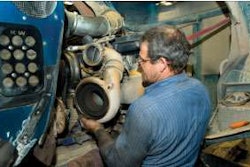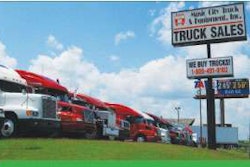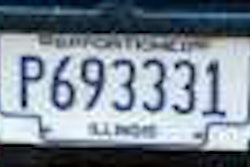
Choosing an idle reduction technology can be one of the most difficult decisions to make. Systems and costs vary widely. A study by the American Transportation Research Institute put diesel-fired heaters at the bottom of the cost range for purchase ($888) and annual maintenance ($110). Full-function diesel auxiliary power units/gensets are at the top, at $7,750 to purchase.
If you don’t employ idle-reduction technology today, start evaluating your need by keeping a detailed idle log. Write down every time you idle and why. Keep track of hours idled and sort them by reason, such as air-conditioning, heat, AC power, warming the engine, etc.Try this for a year ideally, or at least for three months.
If you skip this first step, you will drastically underestimate the amount of time you idle. You’ll also fail to understand the reasons you idle. Idling solutions have pros and cons, and most revolve around the reason for idling. For instance, if you idle only because you need heat, then a full-blown APU is overkill. A better solution is a small diesel-fired heater, which is easy to use and inexpensive. For that matter, you might be surprised how easy it is to stay warm with a good arctic sleeping bag or low-draw electric blankets.

If you are idling to produce AC power for a computer, TV, coffee maker, microwave, etc., you can also find inexpensive alternatives to a diesel-powered APU. One TV maker is releasing flat screens that run well on 12-volt systems. Inverters and absorbed glass mat batteries will keep small appliances running for days. Add a small solar panel, and you can keep the batteries conditioned and extend that time as well.
At a recent RV dealer show, I found many new technologies that can be used in trucking for driver comfort. One was a fuel cell technology employing methanol cartridges to keep a bank of batteries charged. It’s clean and quiet and takes up little space. The technology may not be completely ready for the trucking, but it’s getting close.
I am testing an electrical system that shows promise as an alternative to a diesel APU. It produces heat for the cab, keeps the coolant warm for the engine, can run an A/C unit for 12 hours and also generates enough AC power to handle all electrical needs while parked. It’s clean, quiet and efficient. If you combine it with some of the new battery technologies, I believe it will be a better solution for many owner-operators.
Once you have a clear understanding of how often you idle and why, research the options in today’s market. Then calculate the break-even point and return on investment for each solution. This methodical approach will reward you with an idle-reduction technology that fits your operation and your budget. n
Help with your numbers
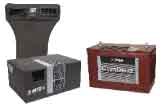 BATTERY-OPERATED: Bergstrom’s Nite APU is powered by Trojan’s OverDrive AGM 31 batteries.
BATTERY-OPERATED: Bergstrom’s Nite APU is powered by Trojan’s OverDrive AGM 31 batteries.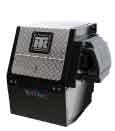 DIESEL-FIRED: Thermo King’s Tripac APU provides engine preheating, battery charging, sleeper climate control and electric power.
DIESEL-FIRED: Thermo King’s Tripac APU provides engine preheating, battery charging, sleeper climate control and electric power.A truck that idles six to eight hours a day for 250 to 300 days each year can burn $6,000 or more per year in fuel, says the U.S. Environmental Protection Agency. The goal of EPA’s SmartWay program is to reduce such energy waste. The SmartWay website has a simple calculator for determining payback for APUs and cab heaters, based on your miles, fuel cost and other factors. Visit www.epa.gov/smartway and search for “single truck calculator.”
Kevin Rutherford is an accountant, small-fleet owner and the host of “Trucking Business & Beyond,” which airs on Sirius XM Radio’s Road Dog Trucking Radio. Contact Rutherford through his website, www.LetsTruck.com.



